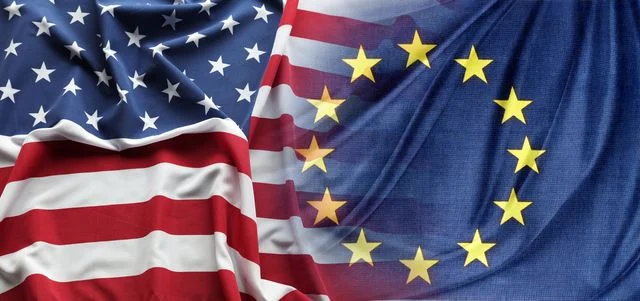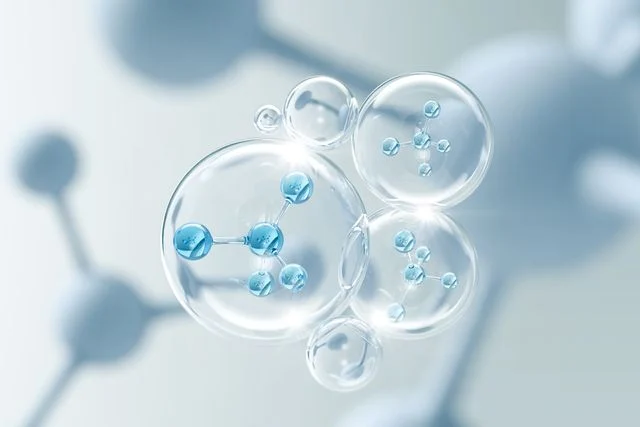The drug development process is inefficient and expensive. Pharmaceutical companies generally spend 10 to 15 years to bring a drug to market1 and can expect to spend anywhere from $1 billion to $2 billion over this timespan.2 Drug development has become more expensive over time, with costs doubling every nine years.3
Artificial intelligence (“AI”) can potentially address these inefficiencies by reducing costs, especially at the drug discovery and design stage. The drug discovery process may involve identifying a biological target responsible for the disease, identifying molecules that interact with this target, and developing lead molecules into preclinical testing. AI can potentially accelerate this process by sifting through large quantities of data to identify targets and then designing drugs that bind to such targets. For instance, Insilico Medicine used its target-identification and generative chemistry AI platforms to create a potential fibrosis drug currently entering Phase II clinical trials in only 18 months.4 Due to AI’s potential, entities ranging from pharmaceutical and biotechnology companies to technology companies such as Google have developed their own drug discovery-focused AI platforms.
While AI has the potential to transform discovery, it may complicate the patenting of the resulting drugs. In Thaler v. Vidal, the Federal Circuit held that the Patent Act limits inventorship to natural persons.5 Drugs that are developed without sufficient human contribution may therefore not be eligible for patent protection. In this article, we examine the current state of the law and how pharmaceutical companies can use AI without foregoing patent protection.
USPTO Guidance
Due to the emerging prominence of this field and its application to the drug development process, there currently is limited caselaw regarding the patentability of inventions co-developed by AI. However, the United States Patent and Trademark Office (“USPTO”) released guidance for AI-assisted inventions in February 2024.6 While the USPTO clarified that such inventions are not categorically patent-ineligible, humans must make sufficient contributions. Ropes & Gray published an article outlining important takeaways from the USPTO’s guidance, which is summarized in the context of drug discovery below.
Key Takeaways
First, any inventors and joint inventors listed on patents must be humans. In other words, AI may not be listed as an inventor on the patent application. Companies that use AI therefore must ensure that humans actually contributed to the claimed invention which, when patenting actual compositions, would mean contributing to the conception or reduction to practice of the claimed compound. If AI was able to select a target binding site and develop a corresponding molecule without sufficient human contribution, that molecule would not be patent eligible.
The USPTO guidance then further clarifies what level of human guidance is required. Specifically, a natural person must “contribute significantly” to every claim set forth in the application for the patent. The USPTO advises courts to use the three Pannu factors, which historically have been used in the joint inventorship context, to determine whether a human made a significant contribution.7 Each named inventor must “(1) contribute in some significant manner to the conception or reduction to practice of the invention, (2) make a contribution to the claimed invention that is not insignificant in quality, when that contribution is measured against the dimension of the full invention, and (3) do more than merely explain to the real inventors well-known concepts and/or the current state of the art.” While these factors are helpful, they are not specific to AI-assisted inventions. As a result, the USPTO set forth a non-exhaustive list of guiding principles to inform the application of the Pannu factors. These principles are analyzed in the context of the pharmaceutical industry below.
Applying the Guiding Principles to Drug Development
There are a few key principles from the USPTO’s guidance that apply in the drug development context.
First, as is the case in all inventorship contexts, all of the named inventors need not contribute to every claim, but at least one natural person must contribute in a manner sufficient to satisfy the criteria for inventorship to each claim. A natural person’s use of an AI system does not negate the person’s contribution as an inventor. In other words, if a natural person made a significant contribution to each claim, then such invention would be patentable, even if the AI system also made significant contributions. Claims to which humans made no contribution are not patent eligible.
Second, merely recognizing a problem or having a general goal or research plan does not rise to the level of conception. In the context of the life sciences space, a scientist who merely presents a general problem for an AI platform to solve would not be an inventor. Rather, the human must provide a specific-enough prompt, or otherwise provide enough guidance to the AI system, such that his or her contribution rises to the level of conception. Given the current lack of caselaw, it is difficult to determine what level of interaction between a human and AI platform is necessary.
Third, reducing an invention alone is not a significant contribution. Practically speaking, this would mean that if an AI platform proposed a molecule, a human would generally need to do more than simply synthesize a real-world version of this molecule. In unpredictable research areas, there is an exception to this general principle known as the doctrine of simultaneous conception and reduction to practice.8 Under this doctrine, for certain unpredictable technologies such as small molecules, conception occurs only after the invention has also been reduced to practice through successful experimentation. Therefore, if a human’s synthesis of an AI-suggested molecule in the wet lab setting is needed to resolve uncertainties, the human may have contributed to the conception of this molecule and therefore would be considered an inventor. However, a human would not be an inventor based solely on synthesizing an AI-suggested compound if synthesis is not required to resolve any such uncertainties. When developing a molecule, life science companies should consider if this doctrine is likely to be invoked or whether researchers would need to do more, such as make material modifications to the molecule or perform functional testing to ascertain or confirm important functional features of the molecule.
Fourth, a natural person who develops an essential building block from which the claimed invention is derived may be considered to have provided a significant contribution to the conception of the claimed invention. In other words, if a company developed an AI platform, or an instance of an AI platform, specifically trained to address a specific life sciences problem, the company’s development of the platform would be a significant contribution to the invention.
Fifth, a person simply owning or overseeing an AI system that is used in the creation of an invention, without providing a significant contribution to the conception of the invention, does not make that person an inventor with respect to the outputs of that AI system. A company should not expect to be able to patent and control molecules created using an AI platform simply because it owns the platform itself.
Life Sciences Examples
The USPTO released two sample scenarios to illustrate how to determine inventorship for AI-assisted inventions in the life sciences industry.9 In the first scenario, a professor and a post-doc used AI to identify drug compounds with high binding affinity to an intended target. After synthesizing these compounds from among a digital library of known compounds, these individuals analyzed their efficacy and then further modified one of these drugs so it could bind more effectively to the target. The USPTO clarified that both the professor and post-doc were inventors due to their analysis of AI outputs and structural modifications to the drugs amounting to significant contributions to conception. Specifically, they could patent a method claim containing the steps of providing drug-specific information to a neural network, identifying and synthesizing drugs, and making structural modifications to such drugs to improve performance. These individuals could also patent the underlying compound. However, the individuals who merely provided inputs and maintained the AI platform could not be listed as inventors of either claim because their contributions were insignificant.
In the second scenario, an AI expert and professor collaborated to create a drug with good binding affinity to a particular receptor and desirable adsorption, distribution, metabolism, excretion and toxicity (“ADMET”) properties. The AI expert created a new neural network, a Molecule Optimizer (“MO”), which could accept certain numerical values of ADMET properties and code representations of drug compounds and then generate optimized versions of these compounds. The professor identified relevant ADMET properties and created a function based on the optimal value ranges of these properties to be used in the MO. The AI expert then inputted drug compounds into the MO, which generated structurally modified versions of these compounds. The professor then synthesized and characterized these drugs. According to the USPTO, the AI expert and professor made significant contributions to the development of the drug and therefore co-invented the underlying compound. Specifically, they set out to find a particular solution with both a high binding affinity and desired ADMET properties and created a neural network that could process this information and create modified versions of drugs with these properties. They therefore developed the MO focused on a specific problem, meaning the MO was an essential building block from which the claimed invention is derived.
Strategies for Protecting Patent Eligibility When Using AI in Drug Discovery and Design
In light of the USPTO’s guidance, companies should consider the following when using AI in drug discovery and design. While the below are applicable best practices in all inventive environments, the use of AI adds a new feature to traditional inventorship analyses meriting attention at the outset to help mitigate the risk of later challenge.
Determine the Patentable Inventions
First, companies should determine what inventions are potentially patentable in light of the human inventorship standard. As demonstrated by the USPTO’s life science examples, individuals can patent both the underlying compound as well as methods for using AI to create such compounds. However, in both instances, individuals will only be considered inventors if they made significant contributions to the invention being claimed.
Document Human Contributions
Companies should also document human contribution at each stage in the drug development process. Companies can only patent claims that individuals made significant contributions to. Therefore, companies should monitor the respective roles played by humans and AI and only seek to patent those claims that involve significant human contribution.
Materially Modify AI Outputs
A pharmaceutical will more likely be patentable if a human makes an addition to the AI output. For instance, a human could take an AI drug output and make modifications in a wet lab environment to improve its performance in vivo. Unless the doctrine of simultaneous conception and reduction to practice is invoked, simply synthesizing a molecule suggested by AI will not constitute material modification. Rather, scientists can make a significant contribution to the conception by making changes to the AI output to improve the performance of a drug.
Create Specialized AI Systems
Companies that develop AI systems focused on a specific issue will have indicia of human contribution from the outset, thereby likely making it easier to have patent eligible compounds arising from use of such systems. For example, a company could satisfy this standard by identifying a specific set of issues, such as binding affinity to a particular target and in vivo performance, and then developing and training an AI platform to generate drug candidates with the specific properties. However, a general purpose AI platform, such as one that simply identifies compounds with the highest binding affinity to an input target, would likely not create patent eligible outputs. A company would likely need to modify the platform in view of a specific problem such that these changes to the platform would be considered a significant contribution to any generated outputs.
Conclusion
AI has the potential to improve drug discovery and design. However, due to the human inventorship requirement, companies may not be able to patent drugs created using AI systems. When implementing AI platforms, companies should take steps to ensure humans significantly contribute to the design of such drugs. In particular, scientists should experiment with and modify drugs to improve their performance. Additionally, rather than rely on general AI systems, companies should develop and train specialized AI platforms. Companies should also continue to keep abreast of developing law in this area as agencies and courts grapple with real world examples of drug discovery using AI.
- https://www.gao.gov/products/gao-20-215sp#:~:text=Only%20about%20one%20out%20of,marketing%20in%20the%20United%20States.
- https://www.cbo.gov/publication/57126.
- https://www.economist.com/technology-quarterly/2020/03/12/new-drugs-are-costly-and-unmet-need-is-growing.
- https://www.prnewswire.com/apac/news-releases/novel-molecules-from-generative-ai-to-phase-ii-first-novel-tnik-inhibitors-for-fibrotic-diseases-discovered-and-designed-using-generative-ai-302085115.html.
- Thaler v. Vidal, 43 F.4th 1207, 1213 (Fed. Cir. 2022), cert denied, 143 S. Ct. 1783 (2023).
- https://www.federalregister.gov/documents/2024/02/13/2024-02623/inventorship-guidance-for-ai-assisted-inventions.
- Pannu v. Iolab Corp., 155 F.3d 1344, 1351 (Fed. Cir. 1998).
- Amgen, Inc. v. Chugai Pharmaceutical Co., Ltd., 927 F.2d 1200, 1206 (Fed. Cir. 1991).
- https://www.uspto.gov/sites/default/files/documents/ai-inventorship-guidance-chemical.pdf.
Stay Up To Date with Ropes & Gray
Ropes & Gray attorneys provide timely analysis on legal developments, court decisions and changes in legislation and regulations.
Stay in the loop with all things Ropes & Gray, and find out more about our people, culture, initiatives and everything that’s happening.
We regularly notify our clients and contacts of significant legal developments, news, webinars and teleconferences that affect their industries.





